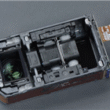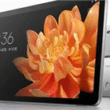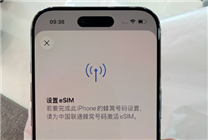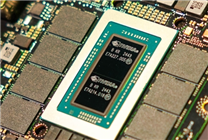The Simplified Process of Activating eSIM for iPhone Air in China
Summary:
- The iPhone Air has officially launched in China, marking the start of the eSIM era.
- Activation of the eSIM is quick and user-friendly, requiring only the scanning of the IMEI number.
- Currently, eSIM mobile services can only be activated in-person at operator locations.
With the official launch of the iPhone Air in China, the smartphone market has stepped into the future with the introduction of eSIM technology. This allows users to activate their devices without the need for a physical SIM card, streamlining the process significantly.
Easy Activation Process
According to tech experts, activating eSIM for the iPhone Air is straightforward and efficient. The mobile service operator simply scans the device’s IMEI number, allowing for immediate entry into the system. This eliminates the need for lengthy or complicated procedures traditionally associated with SIM card activation.
Notably, the iPhone Air is designed exclusively for eSIM usage, meaning it does not support physical SIM cards. Major telecommunications operators in China, including China Mobile, China Telecom, and China Unicom, are fully equipped to provide eSIM services to users.
Key Features of eSIM Activation
- User-Friendly Interface: The activation involves minimal steps, focusing primarily on IMEI number scanning, which enhances user experience significantly.
- Device Compatibility: The iPhone Air exclusively relies on eSIM technology, highlighting a clear shift in mobile communication practices.
- Operator Support: As eSIM becomes a standard, users have multiple operator options to facilitate their mobile services.
In-Person Activation Requirement
While the activation process is simple, it’s important to note that online processing for eSIM services is currently unavailable. Users wishing to activate their eSIM should visit their mobile operator’s offline business center. To complete the activation, they will need to bring their eSIM-enabled device along with a valid ID.
Moreover, each eSIM-enabled device can be linked to a maximum of two phone numbers. Users must also be aware that they are limited to activating no more than two new numbers per calendar month. This ensures that mobile service remains manageable for both users and operators.
Conclusion
The introduction of the iPhone Air and its integrated eSIM functionality certainly marks a watershed moment for the Chinese smartphone market. The effortless activation process holds great promise for enhancing user convenience, while robust support from major telecom operators sets the stage for widespread adoption of this technology.
As we continue to navigate the evolving landscape of mobile communication, the eSIM feature on the iPhone Air is indeed a step towards a more efficient and user-friendly future for smartphone users in China.
Additional Insights
The advent of eSIM technology not only simplifies personal telecommunications but also facilitates travel and international connectivity for users. With the ability to switch networks without the physical burden of changing SIM cards, the benefits are poised to reshape how consumers interact with their devices on a daily basis.
Embracing this shift to eSIM may also drive telecom operators to innovate further, creating new services and packages tailored to maximize this technology’s potential. Keep an eye on the evolving landscape as eSIM technology continues to revolutionize mobile communications.










